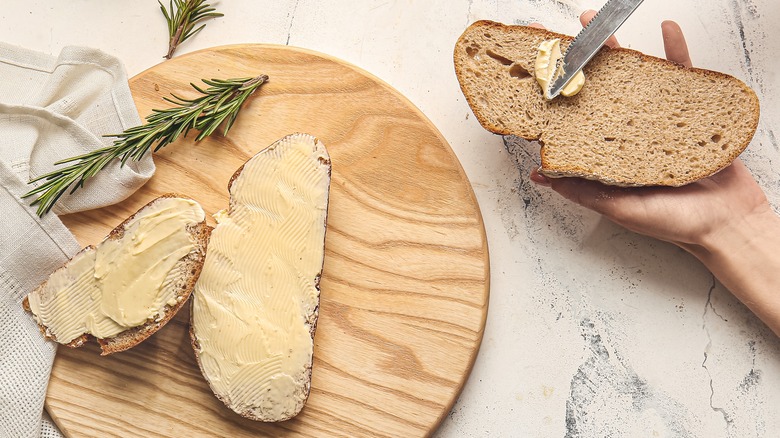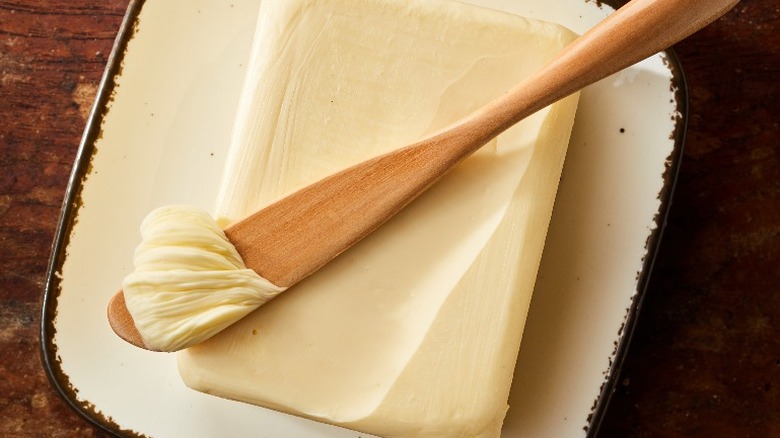Why European Butter And American Butter Are Often Different
When visiting a specialty store or food market, it's easy to be overwhelmed by all the options; and, unsurprisingly, when searching for a staple like butter, it's tempting to reach for what looks familiar. Faced with varieties imported from places like northern France and Italy to small-batch butters hand-churned locally on a farm in Vermont, at-home chefs and bakers have a lot more choices beyond mere "salted" and "unsalted" flavors today — in fact, Butter Journal lists 16 different butter categories!
Butter lends unique flavors to recipes: tangy, sweet, creamy, pungent, and chefs definitely have their butter preferences, as seen in Insider. Many chefs and professional bakers, for example, will only use European butter to prepare their dishes, citing the butter's higher fat content, which means less water, per Taste. But why is the fat content in European-style butter different from, say, Grade AA American butter?
While the U.S. Department of Agriculture (USDA) mandates butter be at least 80% butterfat, European butter must contain at least 82%, per EU standards (via The Washington Post). And as such, most European butter makers will push their butters beyond 82%, up to 85-86%. But even at 82%, a 2% difference in butterfat percentage impacts texture and taste. Not to mention European-style butters are processed differently as well.
American versus European butter
Made with at least 80% butterfat, American butter falls into one of three grades: U.S. Grade AA, U.S. Grade A, and U.S. Grade B, per the USDA, with each grade possessing a distinct butter flavor. European butters, which feature 82% butterfat (or more), offer cooks, bakers, and butter fans in general, a buttery flavor best-described as "slightly tangy," according to the French-American Cultural Foundation.
The reason for this "tangy" flavor comes down to production, as European butter is fermented before it's churned. Further, as the American Butter Institute points out, European-style butter is churned the old-fashioned way, which is more slowly. There are also standards in place when it comes to artisanal butter production in Europe.
In French towns like Echiré, cows' diets are controlled, the milk is closely monitored, and the cream is left to ferment — resulting in an aromatic, buttery finish (via The New York Times). Raw, untreated butter can be difficult to find as the creams go bad quickly, but artisan butter like the Italian Beppino Occelli or the French Paysan Breton are wrapped in paper and sold around the world.
Though imported European varieties can be pricier than American-made butters, the French-American Cultural Foundation maintains that an investment in butter will pay off: think rich sauces, creamy spreads, and chewy sweets in your next recipes.

